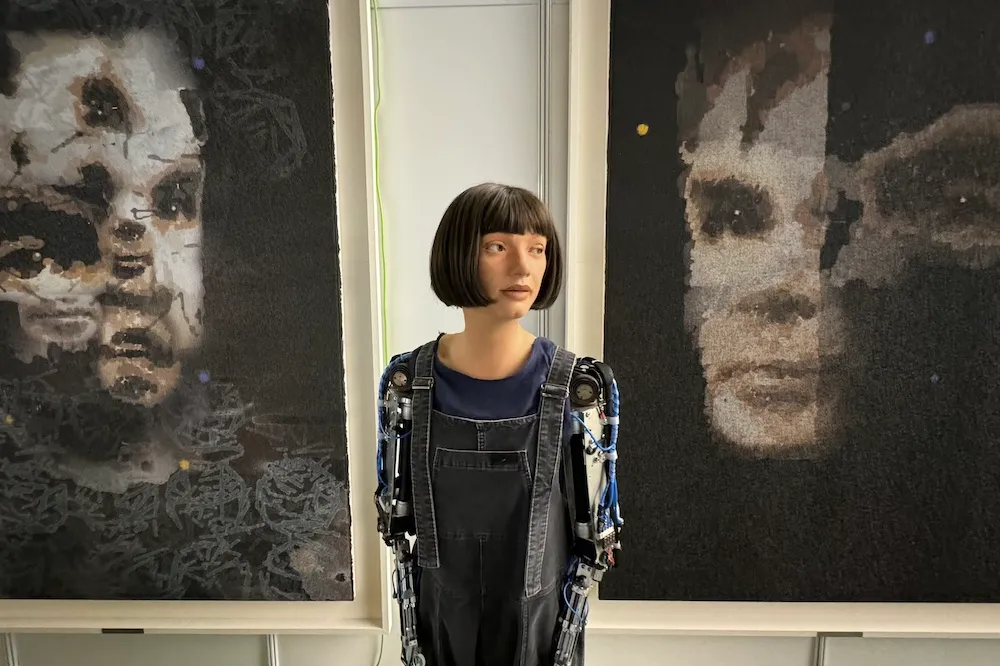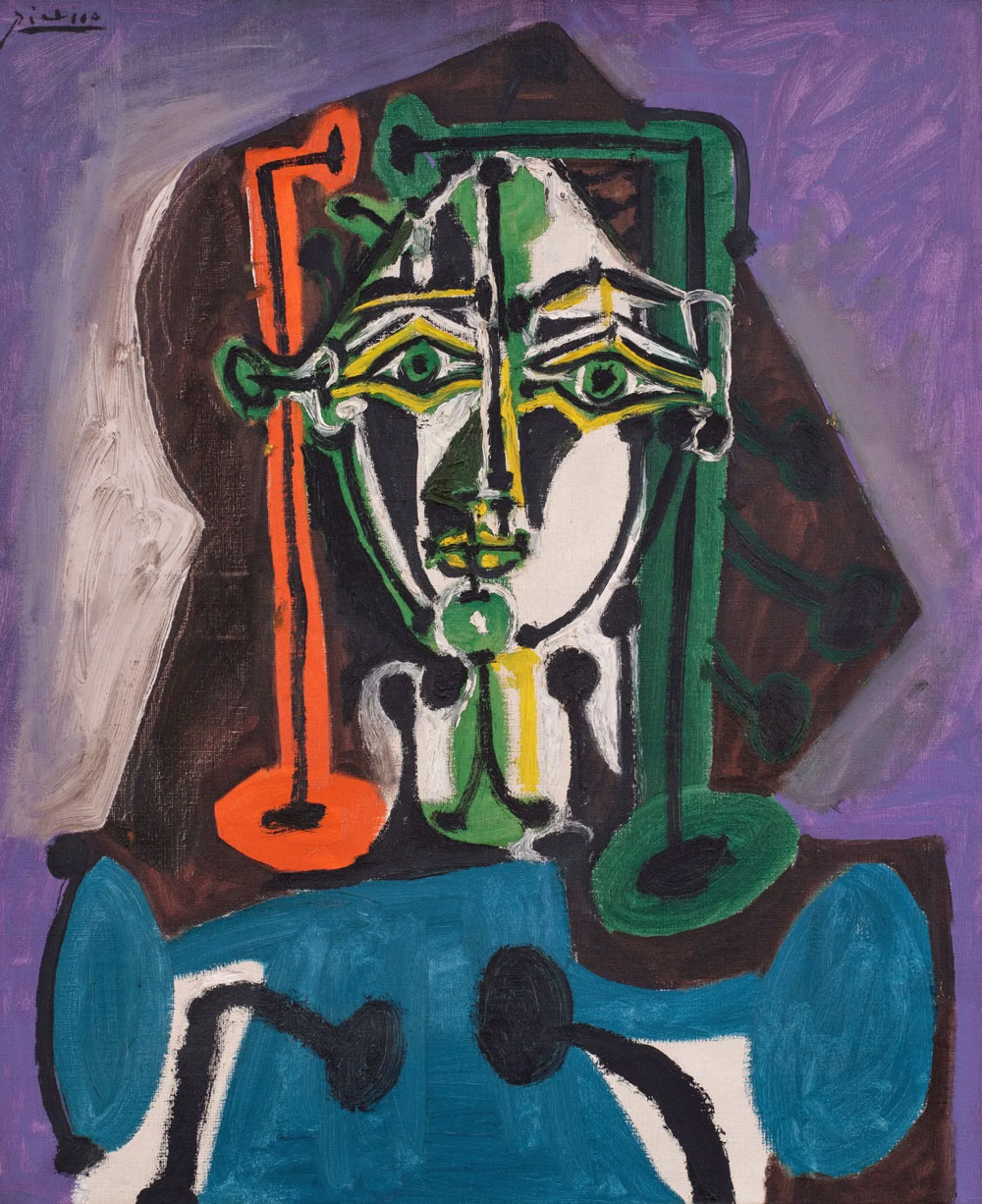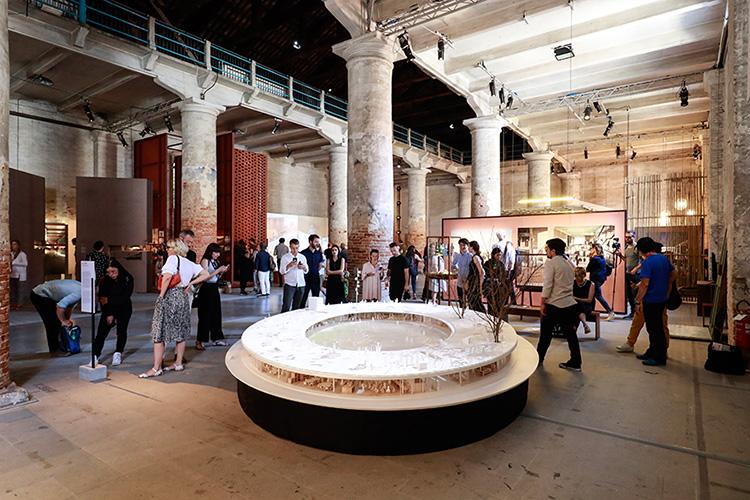In a groundbreaking moment for digital and AI-driven art, Sotheby’s recently auctioned the first artwork created by a humanoid robot using artificial intelligence, achieving a final sale price of $1,084,800. The artwork, titled A.I. God. Portrait of Alan Turing (2024), was produced by Ai-Da, a humanoid robot artist named in homage to Ada Lovelace, the pioneering computer programmer. Ai-Da’s creation far surpassed its pre-sale estimate of $120,000 to $180,000 after 27 bids, marking a significant development in the art world’s engagement with artificial intelligence.
Created using AI algorithms and a robotic arm, A.I. God. Portrait of Alan Turing is a large-scale, 64-inch by 90-inch mixed media piece, featuring a stylized depiction of the mathematician and computer science icon Alan Turing. Ai-Da, depicted with a bob hairstyle, t-shirt, and denim overalls, employs cameras in her eyes alongside custom AI programming to produce these visually intricate works.

The auction of Ai-Da’s work is seen by her creator, art dealer Aidan Meller, as a significant moment that highlights the shifting dynamics in the art industry. “The artwork AI God raises questions about agency, as AI gains more power,” Meller remarked, emphasizing the dialogue between human creativity and machine intelligence. The piece also served as a key exhibit at the United Nations’ AI for Good Global Summit in Geneva earlier this year.
While Ai-Da’s work represented the highest sale of Sotheby’s Digital Art day sale, other notable pieces by artists in the digital space—such as Refik Anadol, PAK, and Xcopy—were also featured. Although some pieces, like Xcopy’s DOOM Party, did not meet reserve prices, the sale of A.I. God illustrates the rising interest in AI-generated art and suggests growing collector demand at the intersection of art, technology, and artificial intelligence.









